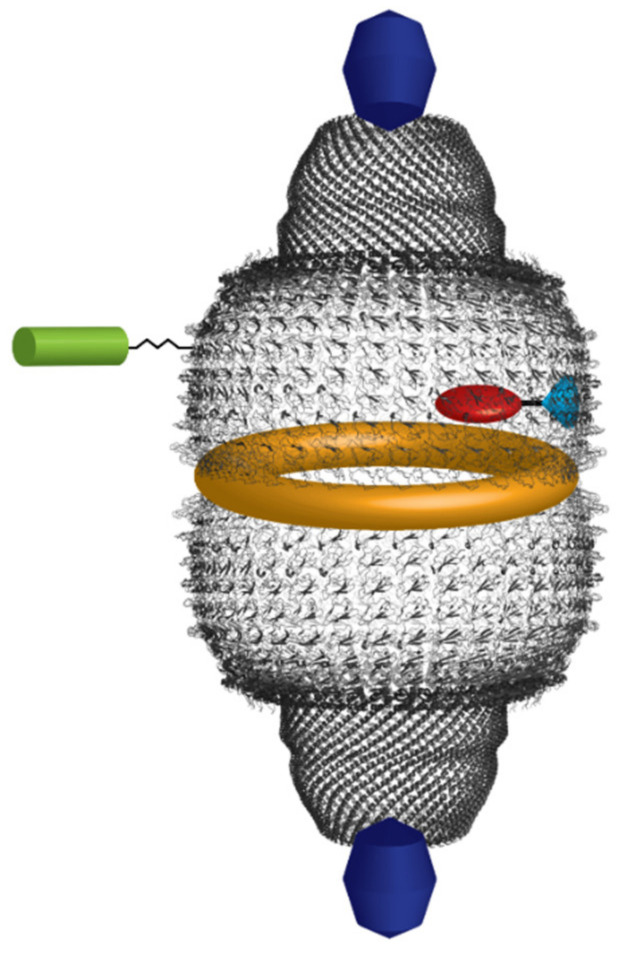Figure 3.
Some basic vault engineering strategies. Orange: the 12-amino-acid (CP) peptide in fusion at the MVP N-terminus confers much greater nanoparticle regularity and stability. Purple: proteins genetically fused at the N-terminus of the INT domain (green) are packaged into the vaults for facilitated delivery (e.g., the pVI endosomolytic peptide, the CCL21 chemokine, the immunogenic major outer membrane protein (MOMP), and PmpG proteins, fluorescent proteins, the NY-ESO-1 peptide, which stimulates the maturation of dendritic cells). Blue: peptides in fusion with MVP C-terminus are exposed on the surface of the nanoparticle and can either target it to specific cell receptors (e.g., EGF, the Z domain of protein A, which can bind any IgG) or facilitate its cellular uptake (e.g., pVI and the cell-penetrating peptide TAT48). Red: different proteins, such as TAT48 or fluorescent probes, can be covalently attached to MVP subunits via suitable linkers.

